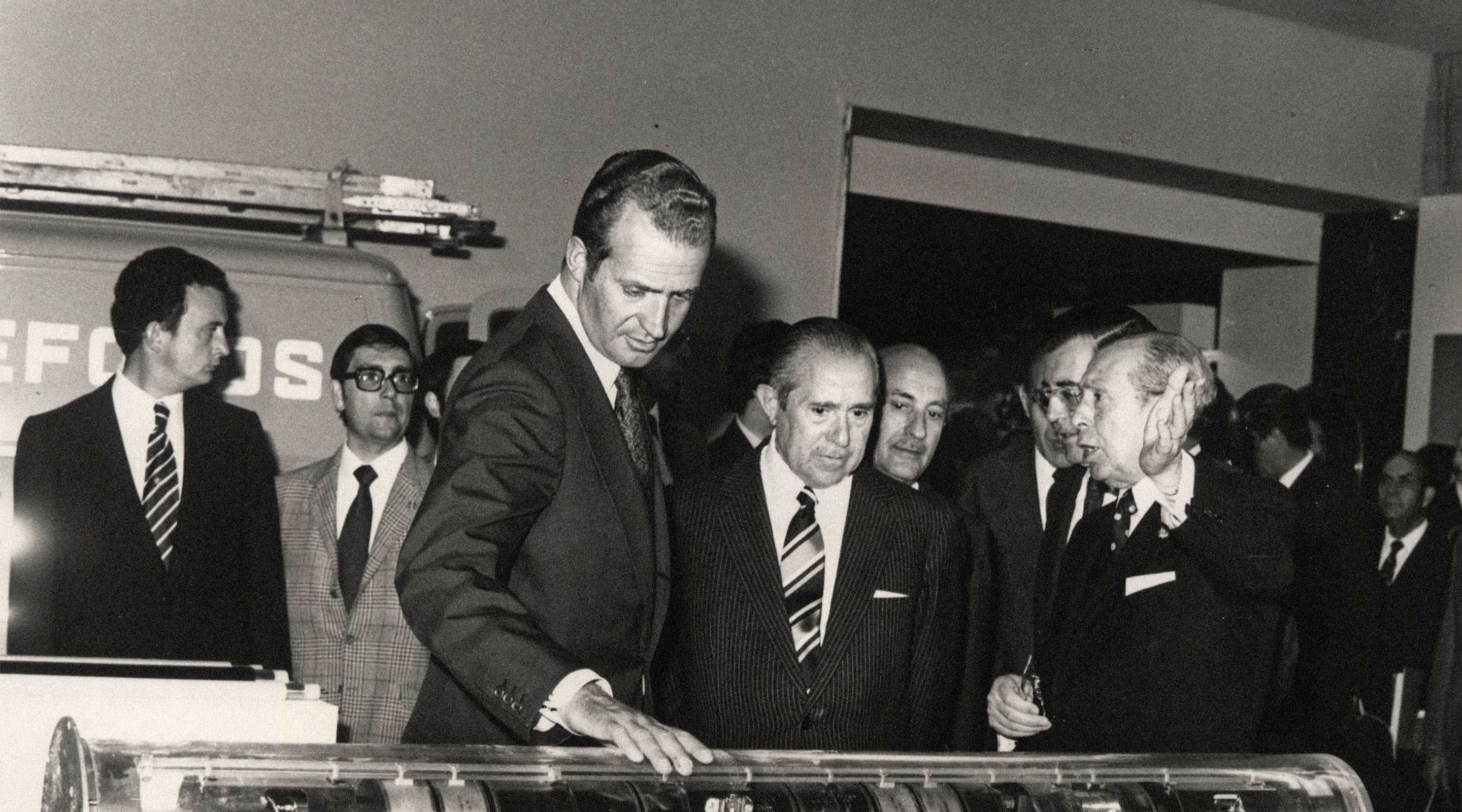
1974
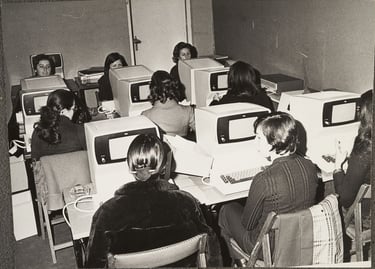
The Company celebrates half a century as a symbol of modernity and service to society. Data is growing, calls are increasing and the number of telephone operators has reached a record high: 11,000 professional experts in connecting people.
Half a century of history
01
Under the chairmanship of José Antonio González-Bueno, Telefónica celebrated its 50th anniversary in 1974. A historic milestone at a historic moment, which Telefónica celebrates with a major exhibition at the Palacio de Congresos in Madrid, inaugurated by the then Prince Juan Carlos de Borbón. An exhibition at the forefront of technology that served to "show off" the latest technological advances. Spain then had, for example, the only "mobile" telephone that worked in vehicles, as well as the latest models of terminals and switchboards. As a souvenir, Telefónica minted the famous "Fiftieth Anniversary medals", now a real collector's item. Six metal medals with the logo designed for the 50th anniversary have been left as a legacy of the company's first half century.
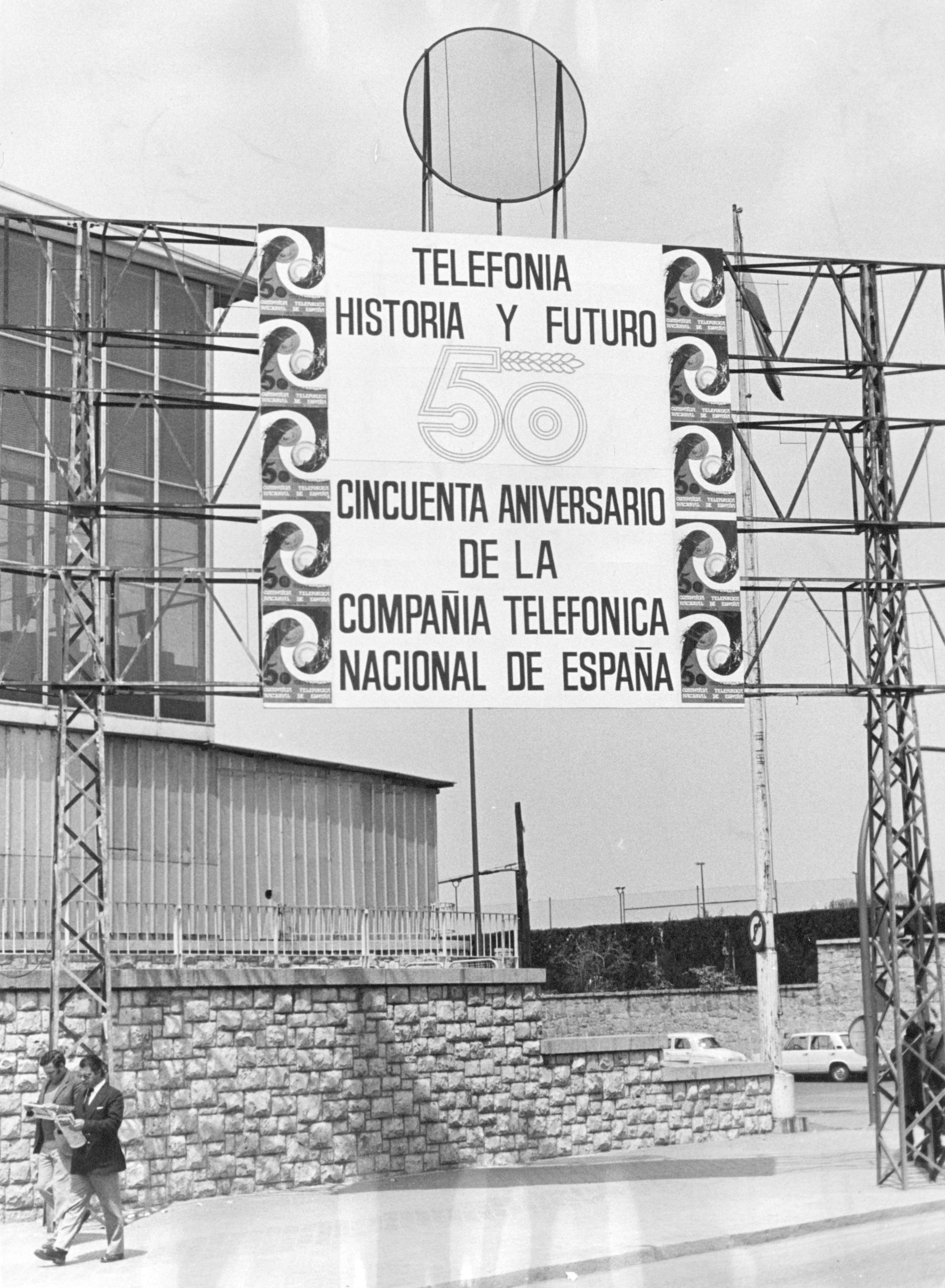
More telephonists than ever before
02
This is the year in which the number of female teleoperators, that emblematic figure who for decades perfectly embodied the spirit of Telefónica, reached its highest figure, over 11,000. From then on, the pace of service automation accelerated, and with it, the disappearance of this type of professional profile, which combined customer service with technical knowledge like no other. At the end of the 1980s, telephone operators ceased to be a professional category: all calls were "put through" on their own.
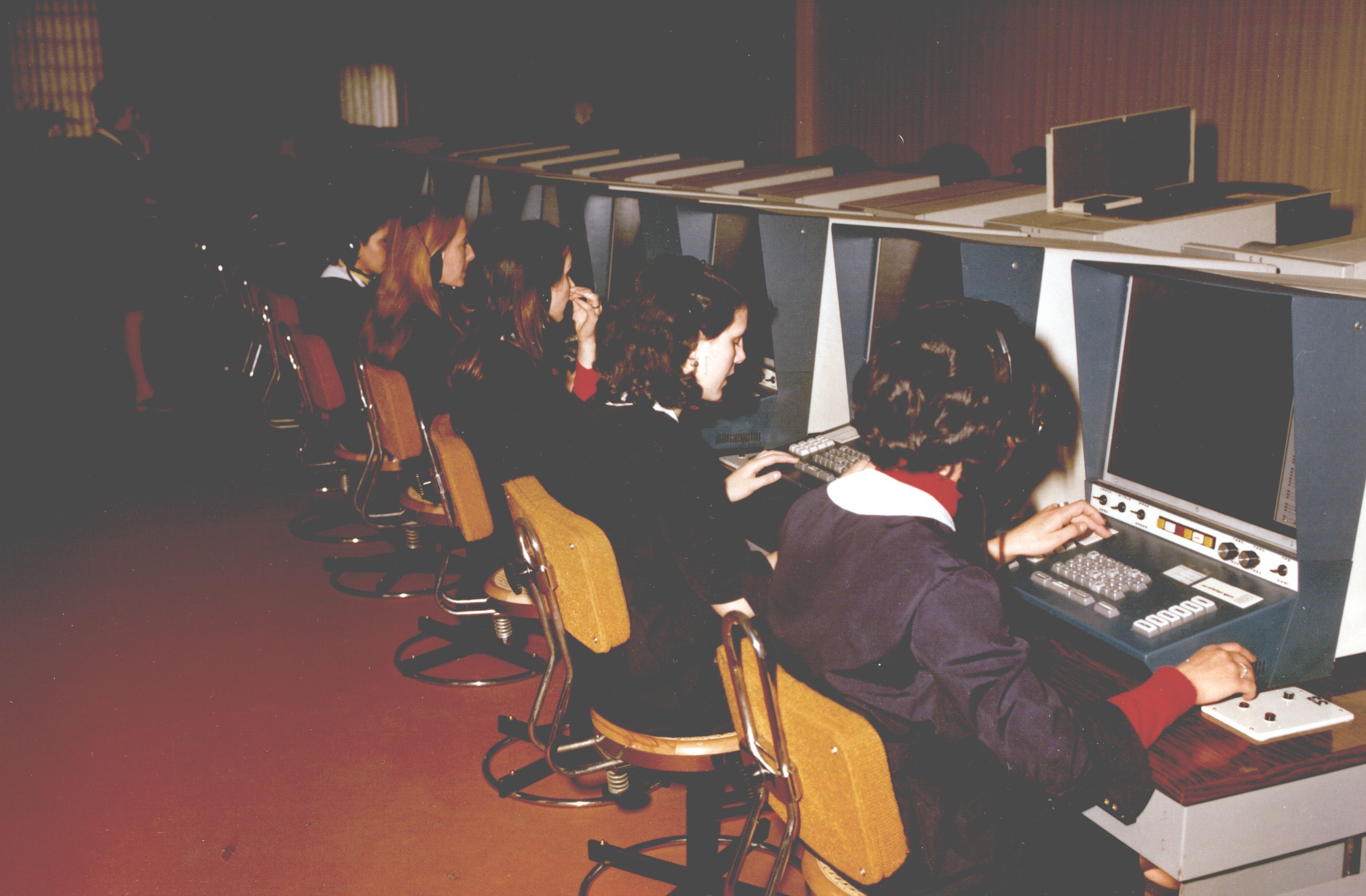
Data is growing and needs to be managed
03
Data transmission over the network is growing exponentially and Telefónica sees a clear need to find a team of engineers to start paying attention to a phenomenon that is gaining traction and "threatens" to change everything. This year saw the creation of the so-called Informatics Division - it should have been called Teleinformatics, but a typographical error left it without a "tele". This is the first time that a Telefónica technical team has devoted time, effort and attention to managing the increasing transmission of data with which it serves banks and savings banks, companies and government agencies. Technology is making headway and Telefónica is working, as always, to stay ahead of the curve.
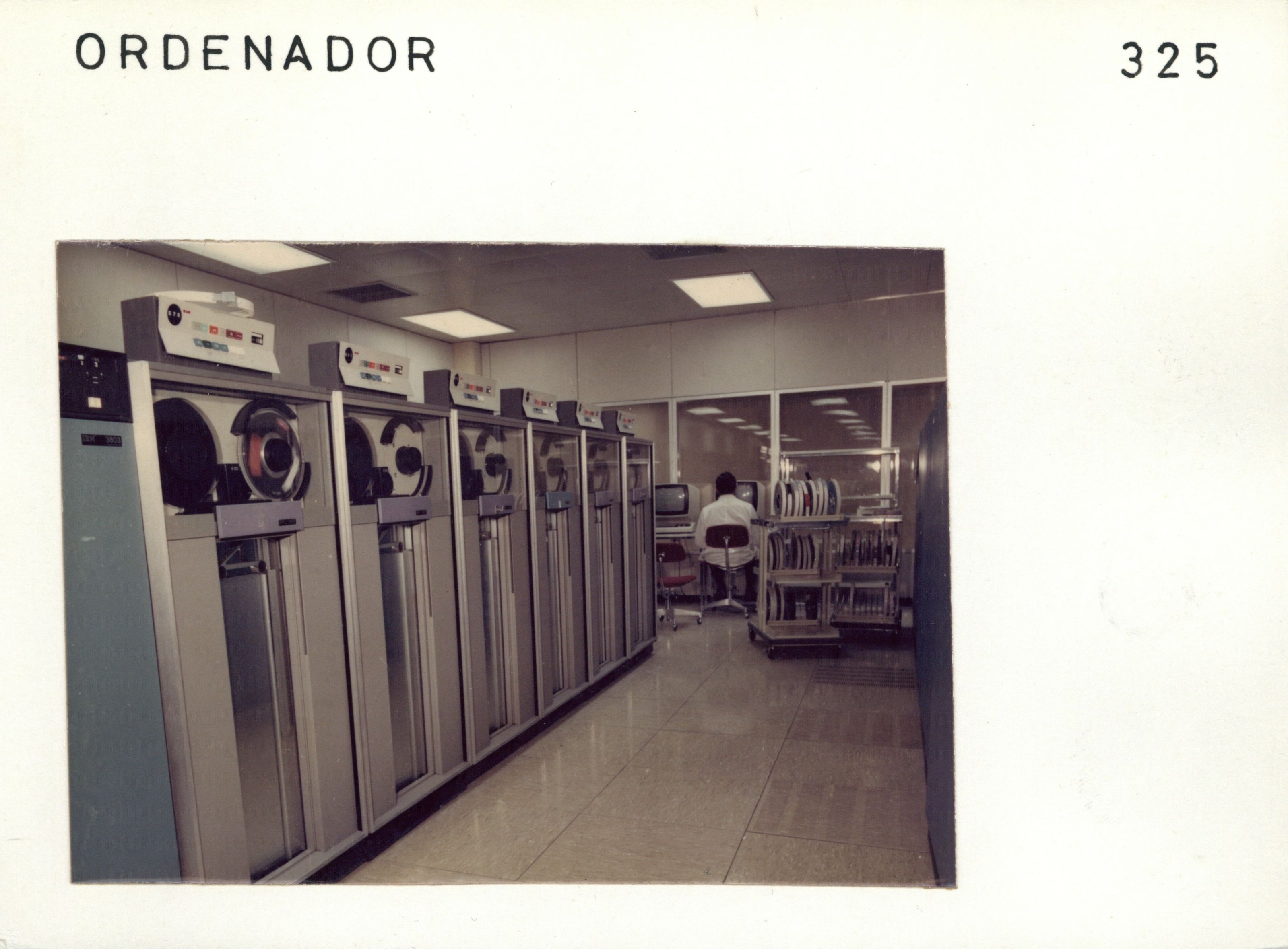
Do you have doubts about what happened?
Ask Aura